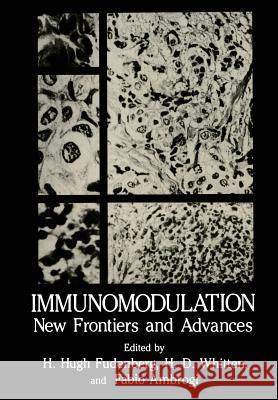Immunomodulation: New Frontiers and Advances » książka
Immunomodulation: New Frontiers and Advances
ISBN-13: 9781461593607 / Angielski / Miękka / 2012 / 458 str.
On May 14-16, 1982, a group of scientists met in Viareggio, Italy to present ideas, and exchange relevant data on current approaches on immunomodulators. We felt that the embodiment of the substance of that international symposium into this volume will be beneficial in keeping both clinicians and basic scientists abreast of the latest exciting developments in this rapidly accelerating field. We hope that the publication of this series of papers by an international panel of experts will enhance the nature of future inves t igat ive stud ies with such ent it ies . Under the rubric of immunology, it is obvious that such a term as "immunomodulation" could be construed as being all encompassing. However, it is intriguing that the immune modulators touched on in these sessions can be subcategorized into about five broad groups. Almost all substances, excepting those entities that are immuno- logically inert, will have some modulating effects on immunity. From the coarse adjustment of antibody feedback inhibition upon cellular limnunity to the subtle finesse envisioned in Jerne's idiotypic network and s'lppressor T cells, immunomodulators attempt to either magnify or diminish those responses that are normally elicited by antigen. The broad groups - thymic hormones, D.L.E., Interferon, drugs, and the use of bacterial products appear to be at the forefront of much of the pioneering work on immunomodulation.











